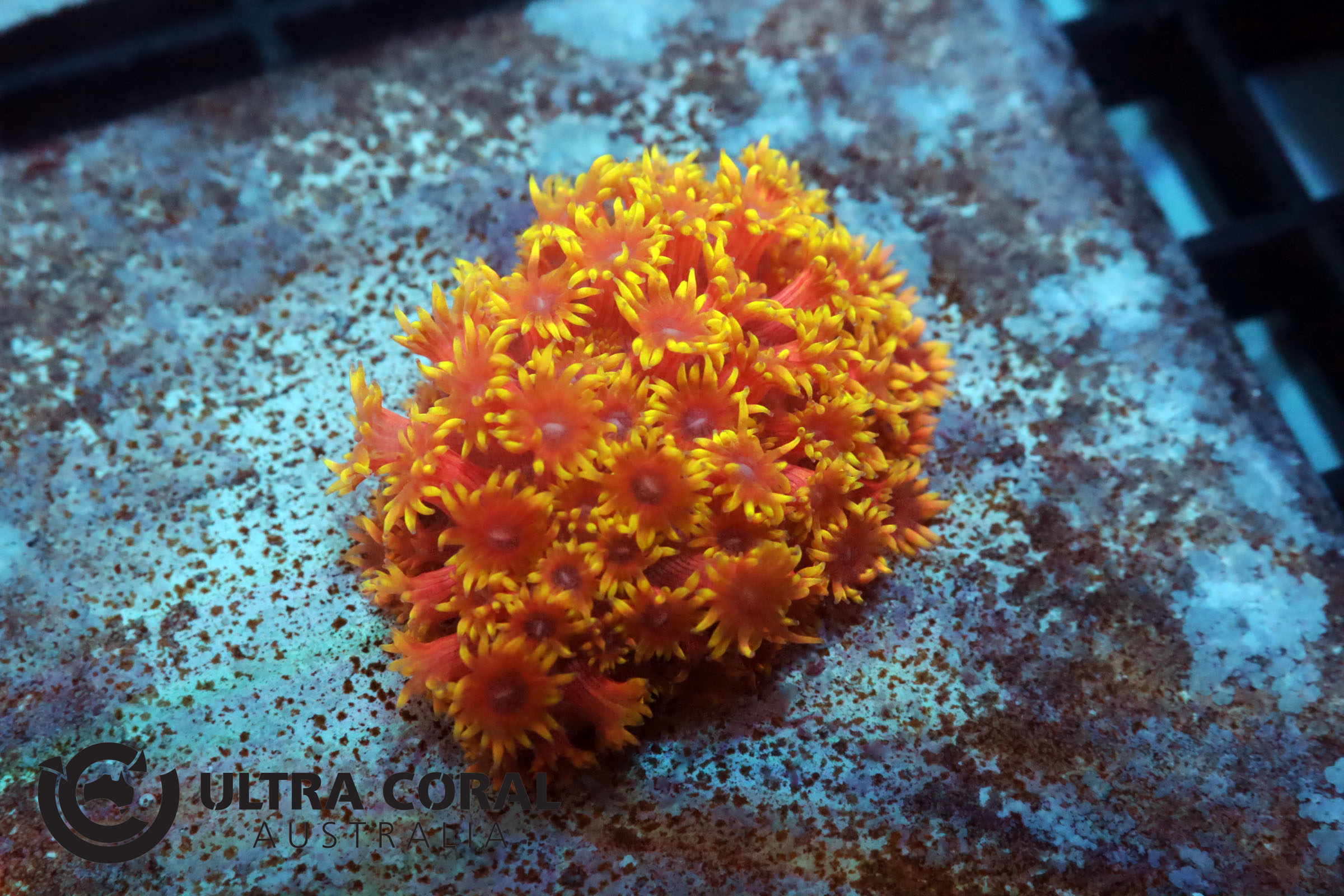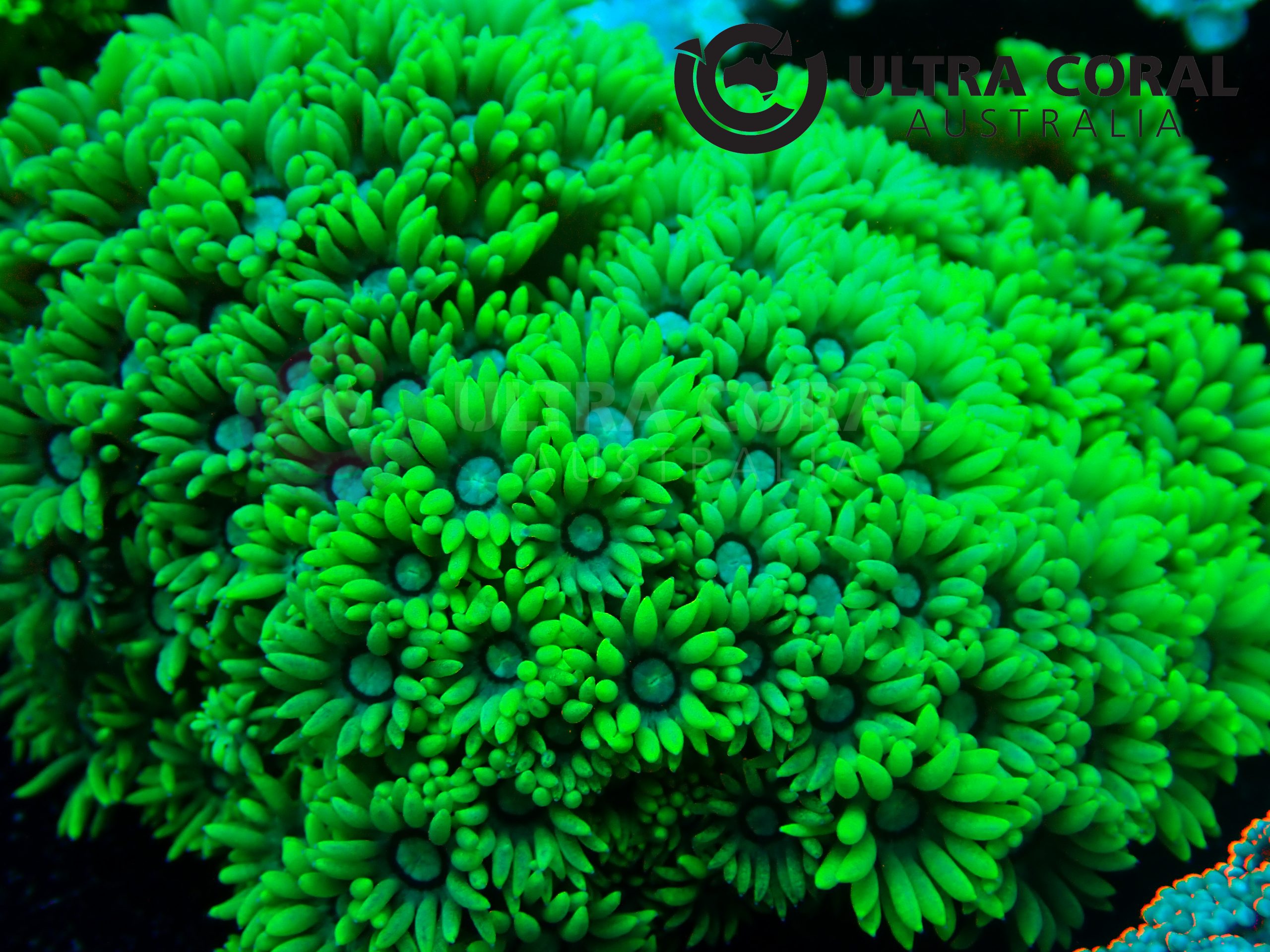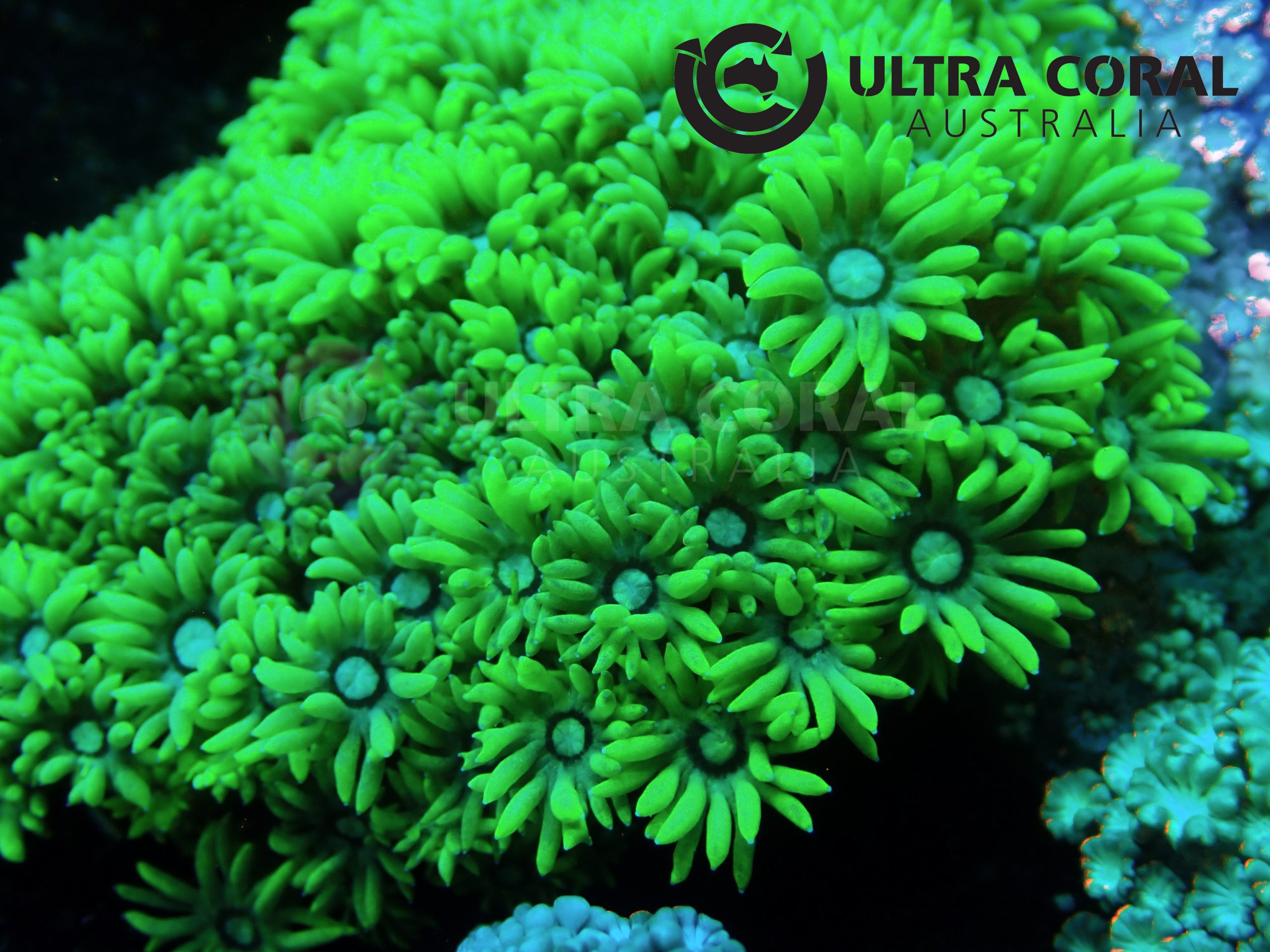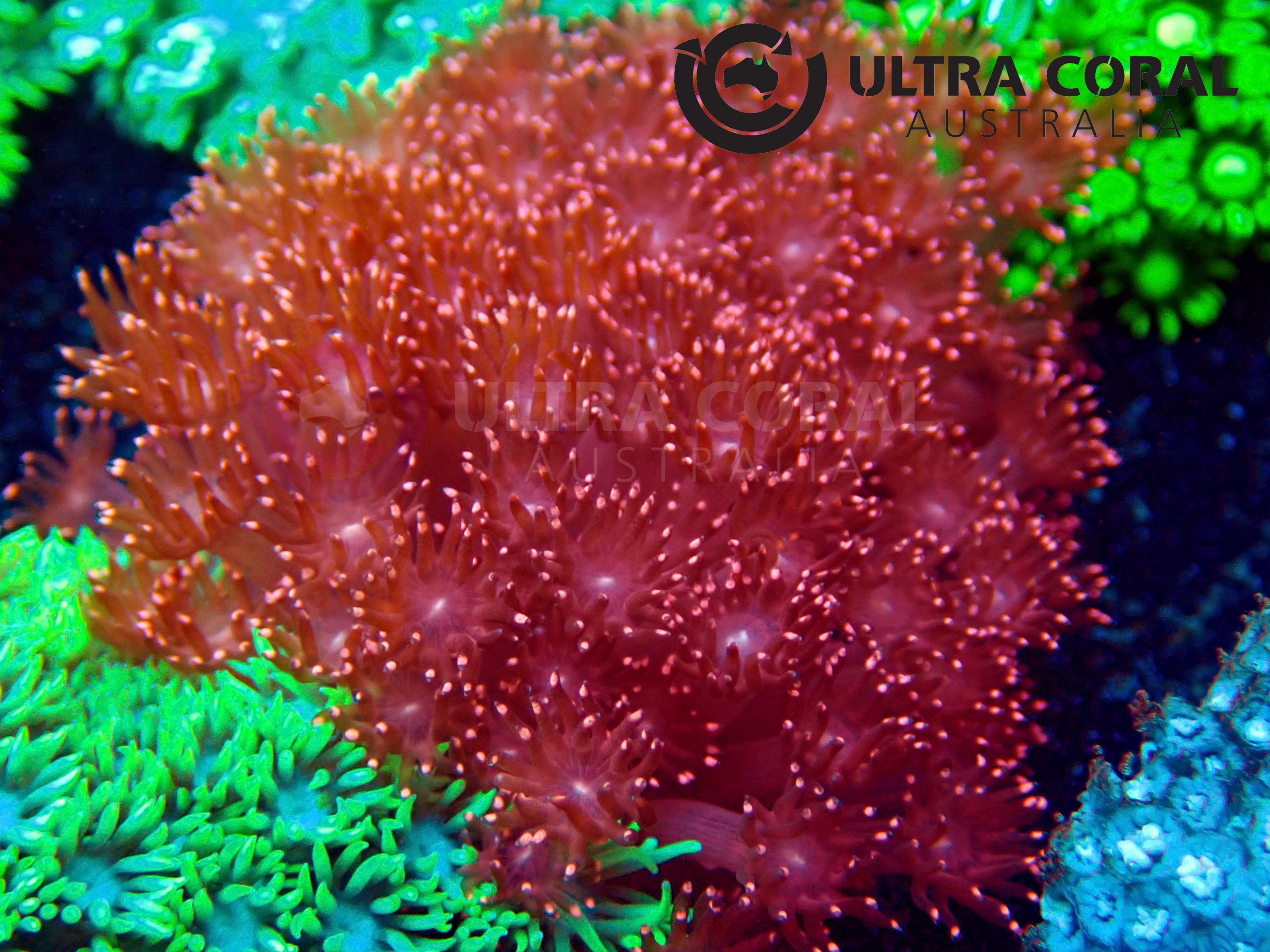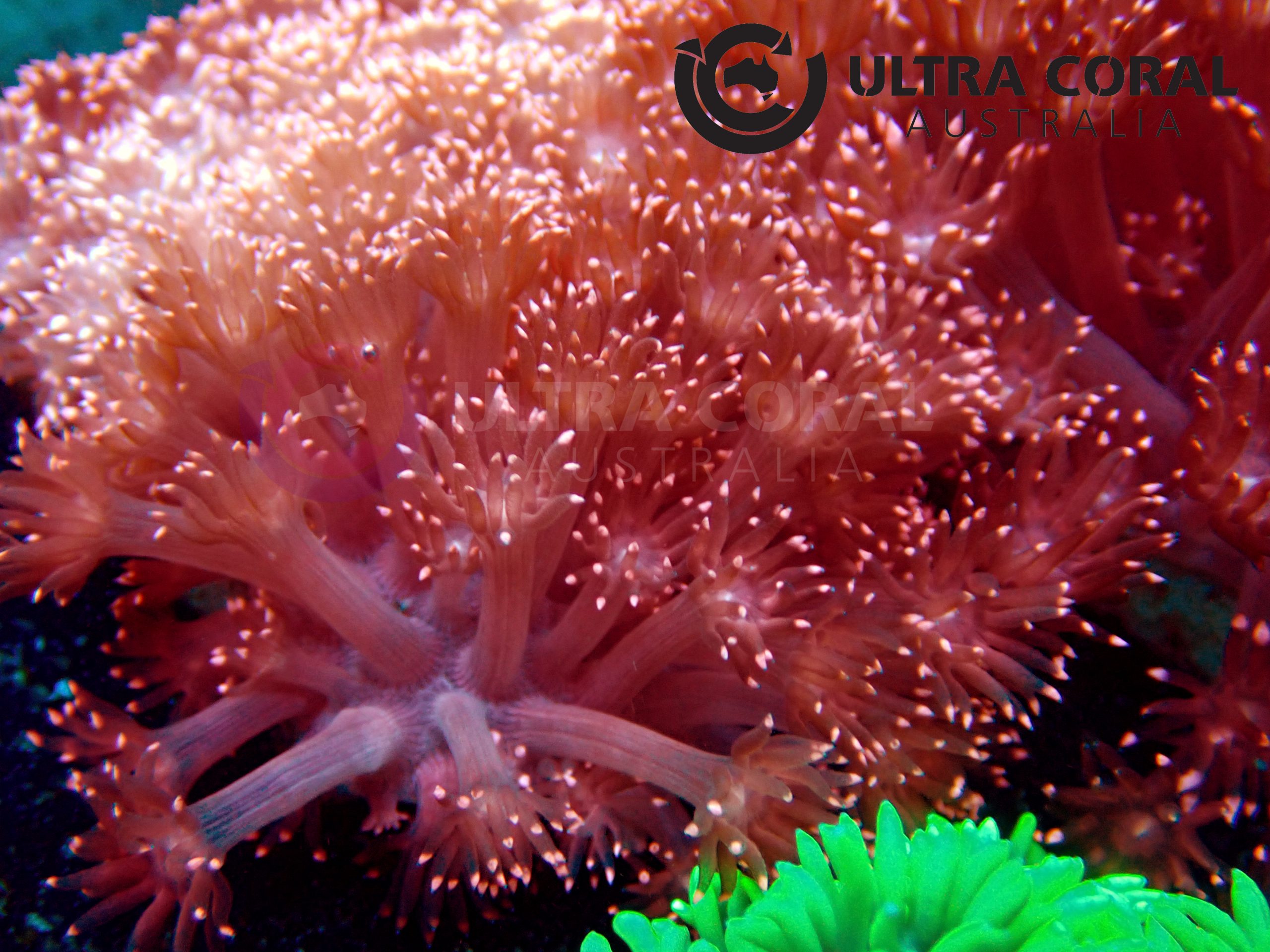Goniopora sp.

Goniopora are commonly known as Daisy Coral, Flowerpot Coral, or Sunflower Coral, because they resemble a cluster of potted flowers when the polyps are open.
Goniopora have numerous polyps that extend outward from the base, each tipped with 24 stinging tentacles, which surround the mouth.
They are not overly aggressive in aquarium tanks, but space should still be provided between itself and other neighboring corals. Its polyps can extend far past its base into the reef aquarium, where it can sting other species of corals
In the wild, Goniopora are mostly columnar or massive, but some can also be encrusting.
Their skeletons are lightweight porous skeletons and they are easily distinguishable by their elongated polyps topped with a fringe of tentacles surrounding the mouth area.
Basic Water Parameters
pH
8.0 to 8.3
Salinity
34 - 36ppt
Temperature
24.0 - 26.0 Celsius
Husbandry Requirements
Lighiting
110-175 PAR
Flow
Some turbulence required
Aggressiveness
Limited ability to damage other corals.
Acclimation Guide
- It is highly recommended to acclimate all corals to a new environment to prevent shocking corals.
- Place the corals in the water from the packing bags and slowly add the water from new environment (Dripping method is recommended).
- Use the water parameter above as a guide.
- When the vessel becomes full , replace the water with the new environment water by a small amount at a time.
- Ensure the water temperature matches with the new environment’s water.
- After the corals have spent adequate time in the acclimation water, gently place the corals to a new environment.
- It is recommended to place new corals under lower light intensity than usually required. Once corals show no signs of stress, it can be moved to higher lighting area gradually.”

